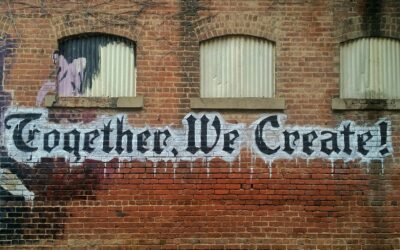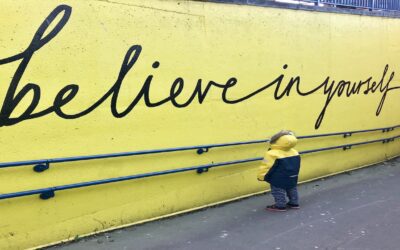In the 1930s a French engineer called Jules Dupuit introduced the concept of Cost-Benefit Analysis, and the world of indecision shifted on its axis. It’s a nifty and simple process that helps you weigh up all the upsides and downsides of a course of action, including the financials and intangibles. While it may seem like an odd step for a creative business, if you have to face a decision in your work and you’re not sure what to do, it can be super helpful.
As the name suggests, a Cost-Benefit Analysis involves adding up the costs of doing something and then comparing these with the benefits associated with it.
You can use Cost-Benefit Analysis in a wide variety of situations. For example, when you are:
- Deciding whether to hire a staff member of contractor;
- Evaluating a new creative or business project;
- Deciding on changes to make, or which direction to move your business into;
- Determining the feasibility of a buying something, from a large piece of equipment to a studio or office to lease or buy.
After completing a cost-benefit analysis, you will hopefully be able to work out some sort of payback period – in other words, the time it takes for benefits to repay costs. Are you comfortable with that time frame?
Remember, though, that for a creative project or business endeavour there may not be any immediate or even longer-term financial benefits, so the repayment will not be in hard money. The repayment might be more in terms of increasing your creative output, bettering your professional reputation, or simply making you happy and feeding your soul. These are sometimes known as “soft” benefits.
Obviously, these benefits are more difficult to measure in terms of financial gain, but they still require your attention. After all, this is the difference between running a creative business and a so-called ‘normal’ business – not everything we do has a financial outcome, but that doesn’t mean those activities are a waste of time and money.
If you think this could help, follow these steps to do a Cost-Benefit Analysis.
Step One: Brainstorm Costs
First, take time to brainstorm all of the costs associated with the project, and make a list of these. Look at the “hard” costs first – how much money is this actually going to cost? Look into this in detail – it’s not just the obvious costs, such as buying materials or taking out a lease, but also additional costs such as paying for training, cleaning, purchasing stock, the interest and fee costs associated with getting a loan, insurance, and any other financial impact you can see.
Also look at the opportunity cost, which is the cost of not doing something. How much money will you lose by pursuing this new thing, instead of continuing along the same path? Will there be a decrease in productivity while you’re learning a new business, or concentrating on your creative work, and can you afford this loss? This can be a scary exercise, but if you want to be sure of the risks you’re taking, it’s an important step.
Step Two: Assign a Monetary Value to the “Soft” Costs
This can be tricky when we discuss creative work, but it’s important. What are the non-financial costs of pursuing this idea? This could be in terms of the time it will take you, or the time it will take away from your loved ones or friends. What about the creative costs – will your existing work suffer if you put yourself into the new project? Can you survive that, and for how long? What about the emotional costs – will you be devastated if this doesn’t work out? Can you handle that emotionally? Do you have any kind of emotional or professional support?
Finally, merge these two steps together and think about any unexpected costs you might have missed. It’s often worthwhile to look at a best, worst and most-likely case scenario for each set of costs. What’s the worst that could happen? What’s the best? What’s the most reasonable outcome? And are you prepared enough for all of them?
Step Three: Brainstorm Benefits
Now, the fun part. What good things will happen as a result of taking this step? It can be difficult to predict revenues accurately, especially for new products or services, but it needs to be done. Realistically, how much money can you expect to make from this adventure? Try another best, worst and medium case scenario to test the water. Also, how long will it take for those benefits to happen? Will you make money straight away? Or will it take time?
Are you going to make any money at all? For purely creative work, or for something very innovative, that answer might be no. Don’t stop at this point – there are always other benefits to consider.
Step Four: Assign a Monetary Value to the “Soft” Benefits
What other benefits might come your way as a result of taking this step? Perhaps you’ll learn something new, or capitalise on an opportunity too good to miss. Maybe your reputation will be enhanced, or your new creative venture will bring attention to your existing work. Perhaps you’ll be creatively fulfilled, happier, less stressed?
Creativity can’t always be measured in terms of financial benefit. If that were the case, there would be a lot less art! In the same vein, however, preserving a beautiful old building or creating an inner-city park has no direct financial benefit either – but it’s still important. And how can you put a financial measure on happiness? Your emotional and artistic health is vital to the ongoing success of your creative business, and sometimes we need to do things in our business that bring those benefit as well as money – or even instead of.
However, those decisions need to be made with the same level of objectivity as any other kind of business decision. How much will you lose if you don’t go ahead with this plan? Learning the answer will help you mitigate the risk of choosing a new direction.
Finally, are there benefits that you may not initially have anticipated?
Now, think about the lifetime of the project or venture – what are ALL the costs and benefits likely to be over time?
Step Five: Compare Costs and Benefits
This is the last step and allows you to objectively weigh up the value of your costs to the value of your benefits, analyse the results, and decide your course of action.
To do this, start with the “hard” or financial costs and benefits, including any opportunity costs you can measure financially. Compare the two values to determine whether your financial benefits outweigh your financial costs. It’s also worth considering the payback time of your hard costs, to find out how long it will take for you to reach the break-even point (the point at which the benefits have just repaid the costs).
Next, look at the “soft” costs and benefits. It’s much harder to track, but look at them side by side and see if you can make an objective decision. How much time will it take? Can you afford that time? How much will your reputation grow? Is it time to expand your creative horizons? These are very difficult question to answer, if course, but hopefully this process will give you some more clarity about the right next step.
Another way of imagining it – if you could step forward into the future and the thing you want is done, and it’s everything you hoped it would be – how much money, time and emotional investment are you prepared to pay for that?
Here’s an example:
Mandy is a web designer who has been operating for just over a year, and the business is going really well. In fact, there’s more work than she can handle. She has someone she can call on when she needs help, but as a freelancer, that person is not always available. It’s time to grow – Mandy thinks she needs a full-time designer on staff, and this means she needs to move out of her home office to accommodate the new person. It’s also time for her to build on her reputation, in the hope that will generate even more revenue and goodwill.
She decides to complete a Cost-Benefit Analysis to explore her choices.
Assumptions
- Currently, Mandy outsources work to a freelancer at the cost of $60 an hour. The work equals about 100 hours a month, at a cost of $6000 per month.
- She conservatively estimates that revenue will increase by 50% if she hires another designer full time, based on existing patterns, in the first year.
- A studio outside the home will be a cost of around $4000 a month, including rent, bills and insurance.
- She would like this venture to break even after a year.
Hard Costs
| Category | Details |
Cost Year 1 |
| Lease | Small studio available in the same suburb, bills included |
$48,000 |
| Leasehold improvements | Reconfigure and design office space |
$2,000 |
| Hire designer | Salary, including benefits Recruitment costs Orientation and training |
$60,000 $1,000 $1,000 |
| Additional workstations | Furniture and hardware Software licenses |
$6,000 $2,000 |
| Business downtime | Two weeks at approximately $5,000 revenue per week |
$10,000 |
| Total |
$130,000 |
|
Hard Benefits
| Benefit |
End Year 1 |
| Current revenue is $120,000 50% revenue increase |
$60,000 |
| Paying freelancer $6000 per month (or $72,000 p.a on average) versus salaried employee $60,000 p.a: savings equals $12,000 per year |
$12,000 |
| Mandy being free to spend time on business development and keeping bigger, richer clients happy – a guesstimate |
$40,000 |
| Improved customer service and retention as a result of extra staff and office – a guesstimate |
$10,000 |
| Total |
$122,000 |
Based on this analysis, Mandy will not be paid back within a year.
- Also, the estimates of the benefit are subjective, and there is a degree of uncertainty about whether or not these numbers are accurate.
- However, using these rough figures Mandy has made back almost 94% of her costs – she should be able to break even after another month if all goes well.
- Plus, many of the soft benefits have not been assigned a financial value. Mandy now needs to think about the additional, non-financial costs and benefits such as time away from her friends, professional and creative reputation, and her ultimate goals and desires for her business and personal life.
Ultimately, Mandy decides she has more to lose by not acting and takes the steps towards finding a studio and hiring a staff member.
The cost-benefit analysis process is not perfect and can be flawed if the project has no financial costs or benefits at all, and is much more subjective. However, the process of breaking down the decision into smaller parts, and objectively analysing those parts in comparison to each other as best you can, will help you to better understand the risk you’re going to take. Can you afford to take this step? More importantly, can you afford not to?





0 Comments